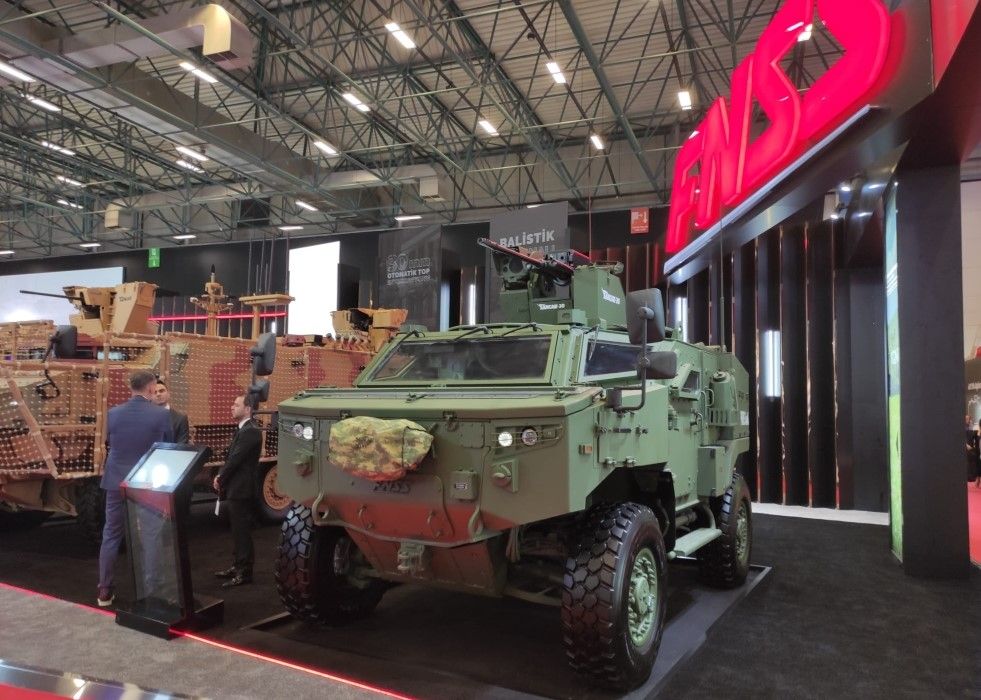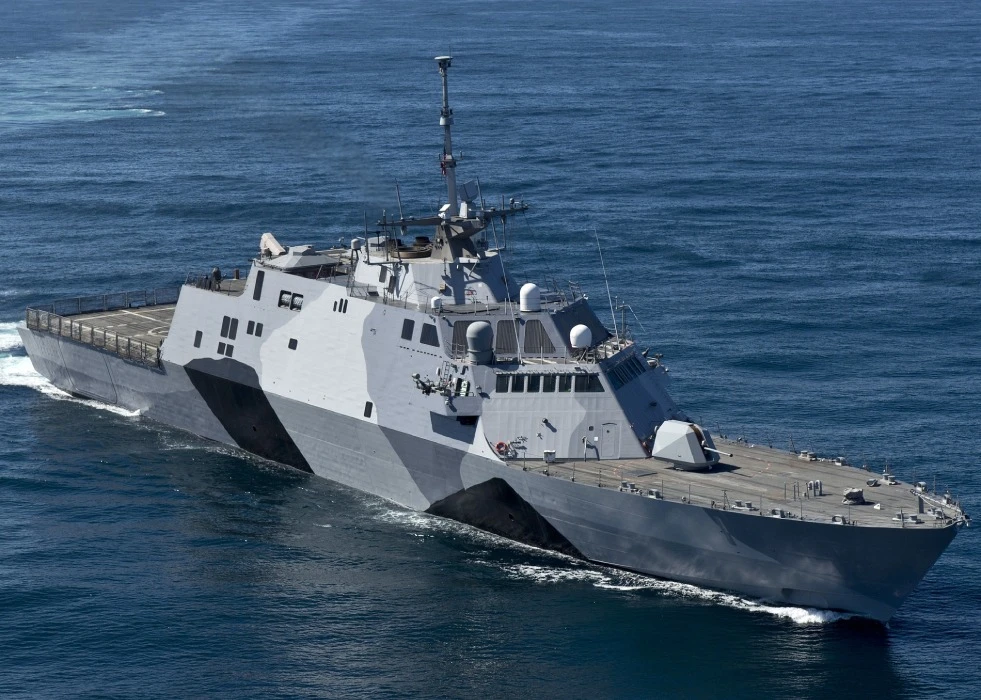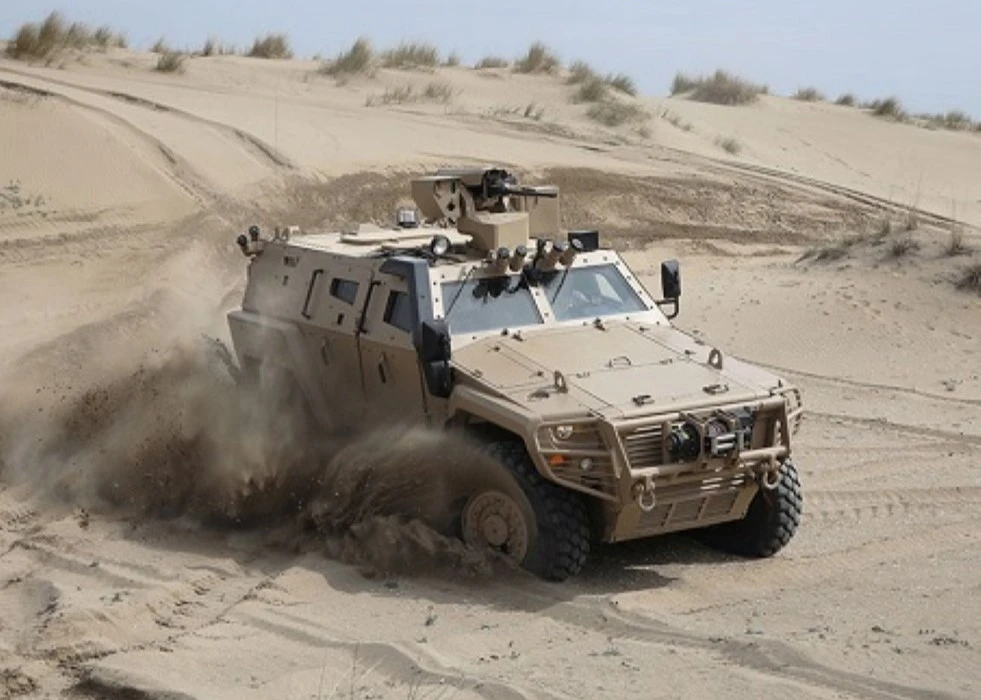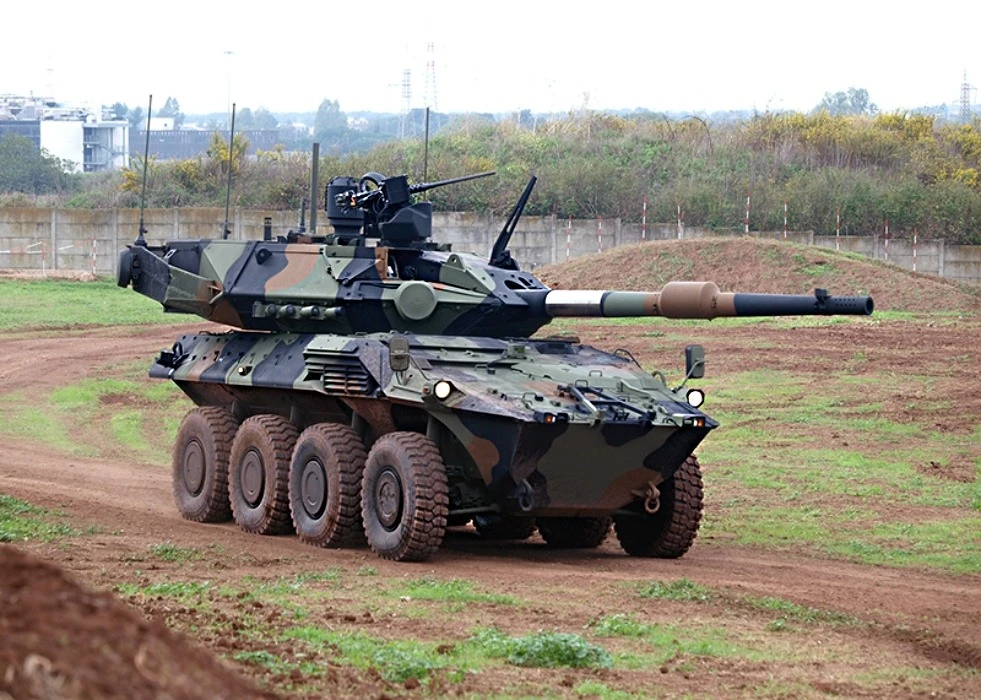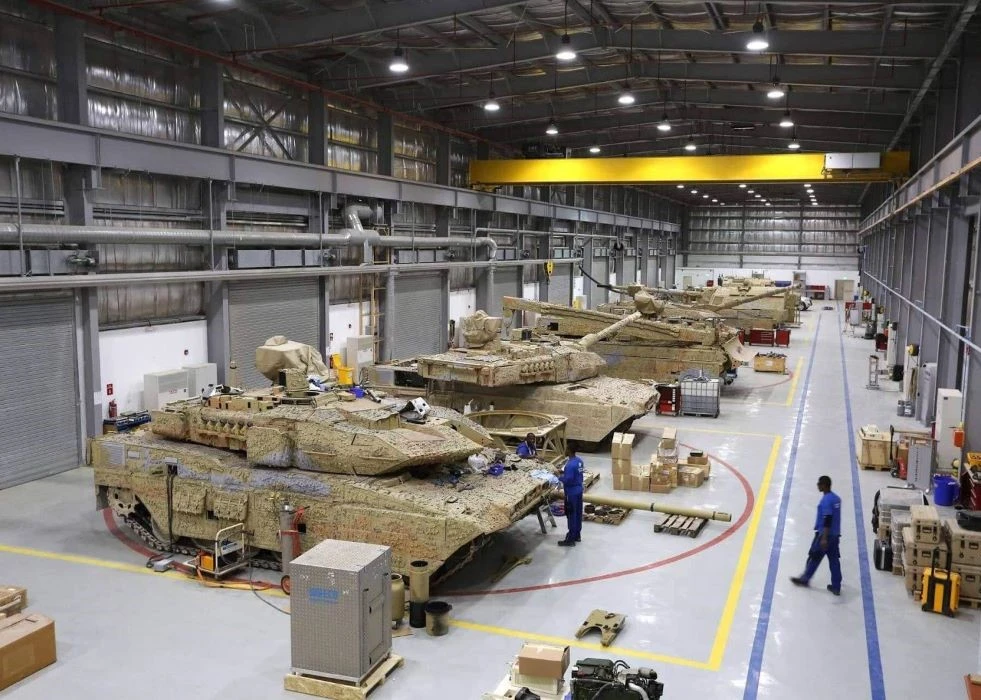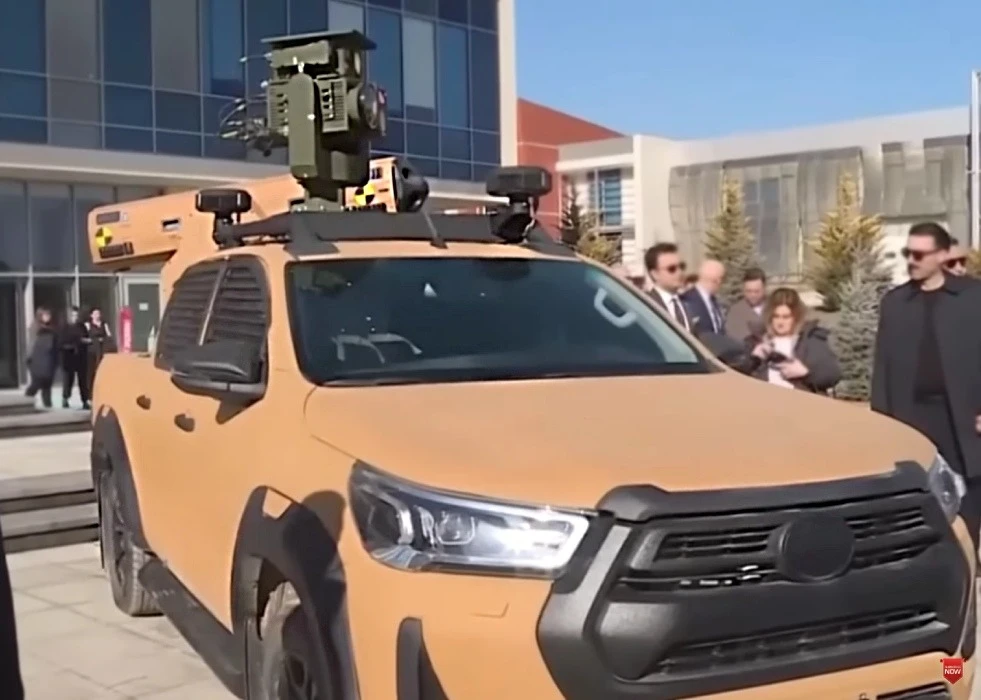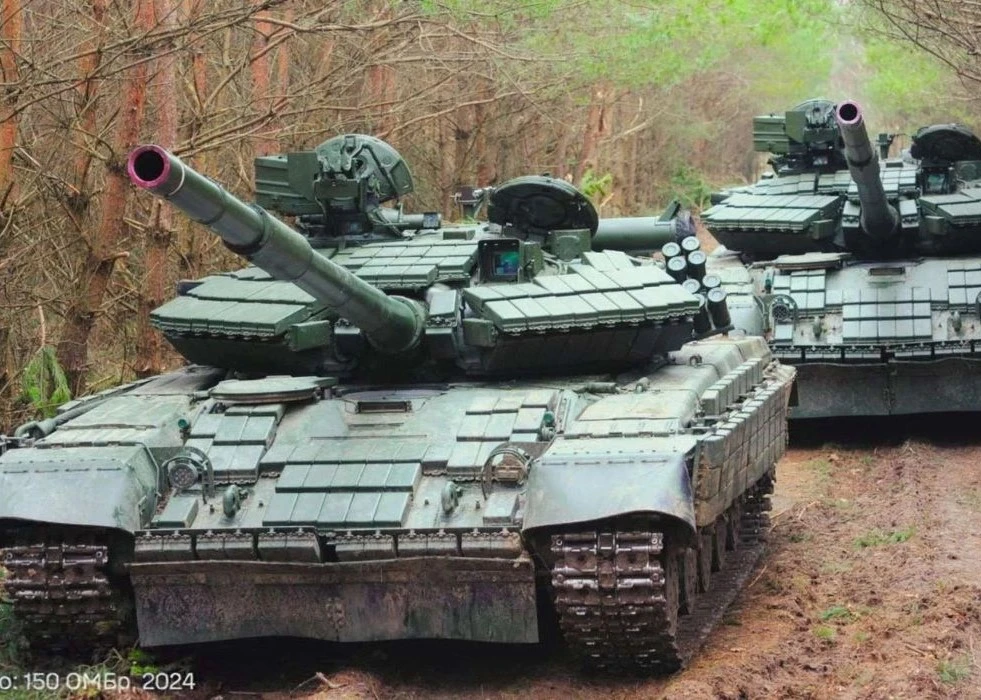Even the best plan collapses with the first gunshot on the battlefield. Therefore, reconnaissance means strategic importance to detect the enemy's movements and predict possible moves in the tactical field. Although manned and unmanned aerial vehicles are now being deployed for surveillance tasks, a well-determined ground reconnaissance, directly near and or even behind enemy lines, can drastically change the course of the battle. Therefore, armoured vehicles still have an essential role to play. One of the newest solutions further strengthened with advanced electronics with advanced technology, is the FNSS Pars 4x4 Sensor Reconnaissance Vehicle.
The battlefield also consists of a highly complex equation in which several incalculable factors can come to the fore quickly. The situation can easily turn into chaos if not brought under control. Reconnaissance plays a crucial role when well-determined command and control are vital. It is critical for a unit of skilled soldiers to report enemy movements to ensure the situation is controlled and utilise possible opportunities instantaneously.

Knowing the enemy's position and front is the most basic requirement. However, the completion of a list that can be extended further, such as deployment, behind-the-front line activities, supply and replenishment situation, the morale and motivation of the soldiers, the combat determination of the troops, occupied territories utilisation level, reinforcement and movement of elements, approach and departure directions, possible saturation points, collection points, artillery positions and air bases, etc., also has strategic importance in terms of gaining superiority over the hostile element. It is, of course, getting behind enemy lines is essential to gather the best information on these matters. This is precisely where armoured reconnaissance vehicles come into play.
Reconnaissance and surveillance missions, which mounted troops had carried out for centuries, began to change shape with industrialisation. The active use of vehicles propelled by internal combustion engines during the First World War brought the definition of mechanised warfare to the Second World War. At this point, armies were faced with the inevitable consequence that traditional solutions were no longer adequate in terms of speed and survivability. Fast and armour-protected vehicles were developed to collect the required intelligence by moving further ahead of the mechanised elements. Modern reconnaissance surveillance elements were established with the Blitzkrieg Doctrine. Initially, the binoculars-radio duo was replaced by armoured reconnaissance vehicles equipped with much more advanced electronics.
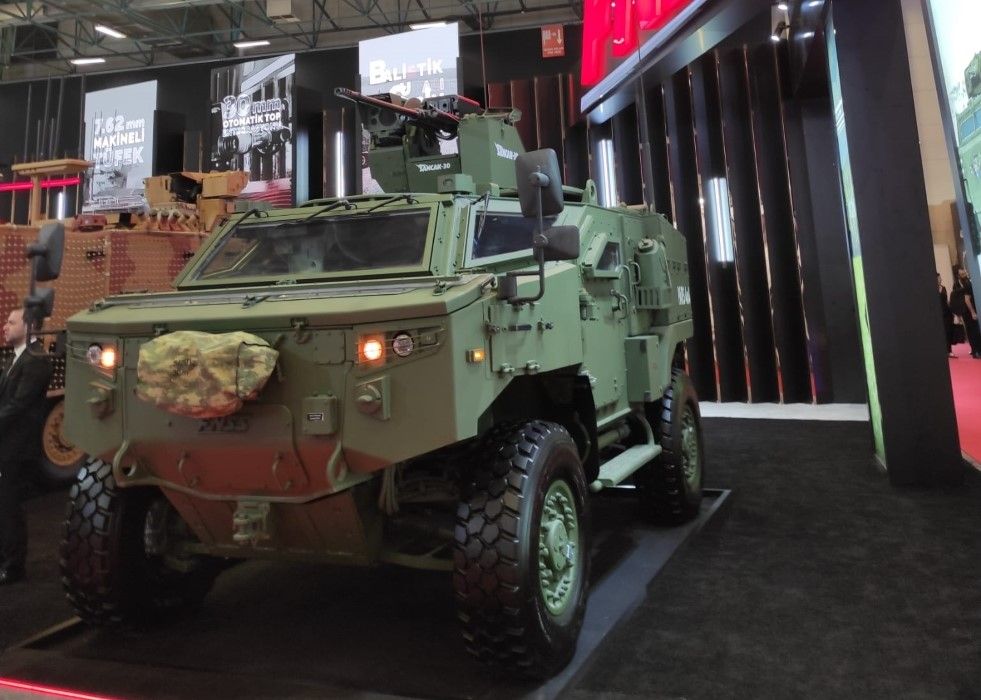
Intelligence and observation, which were the key to victory in many battles in the past, can now be provided by much more modern means. The FNSS Pars 4x4 Sensor Reconnaissance Vehicle is one of the solutions that can operate behind enemy lines with high endurance for the purposes mentioned above, provide firing opportunity when necessary while offering its crew high mobility under ballistic protection, and provide instant intelligence to the command centre while conducting long-distance reconnaissance and surveillance with electro-optical equipment.
The Pars 4x4 was initially developed in line with the wheeled vehicle part of the Weapon Carrier Vehicles Project (STA). All platform activities, including R&D, design and serial production, were completed under FNSS's responsibility. Pars 4x4s, which are currently on active duty in the inventory of the Turkish Armed Forces, are equipped with anti-tank turrets. However, thanks to its open architecture, the vehicle can also perform special tasks such as reconnaissance, forward surveillance, command and control. All operational requirements can be met with a single vehicle in this way.
The hull of the vehicles, which provides operating under ballistic protection in accordance with NATO STANAG 4569 standards to the crew, is also mine-resistant. The automatic fire suppression system is another factor that supports its survivability in addition to the armour equipment of the Pars 4x4. The crew seats also minimise the damage to the crew due to pressure in the event of a mine explosion. The firing ports on the hull also provide joining combat under armour opportunities to the personnel when necessary. The smoke grenade dischargers on the platform can also be used for essential screening. This, of course, is a factor that brings tactical advantages. The hydraulic recovery winch located at the front is also an essential piece of equipment for the vehicle to be able to get back on the road in case of possible disruptions.
Pars 4x4 has a low silhouette and gets its power from the diesel engine. The vehicles, in which various solutions for automotive sub-components are preferred in order to reduce costs, are 5 metres long and 2.6 metres wide. The body height is 2.1 metres. The vehicles, which can be transported even by A400M and C-130 Hercules transport aircraft, can reach an operational range of around 700 kilometres. Other off-road and driving capabilities of the Pars 4x4 Sensor Reconnaissance Vehicle are identical to its predecessor anti-tank variant.
The platforms provide significant gains in terms of situational awareness, which ranks first on the list of requirements for a reconnaissance vehicle. Designed in accordance with ballistic requirements, the windows provide a wide field of view for the driver and crew inside the vehicle. In addition, the peripheral vision system and driver's vision equipment provide personnel with enhanced situational awareness and mobility in all conditions, including day and night.

The reconnaissance variant Pars 4x4s is equipped with a UNIDEF Venom LR gun. The weapon, a low-pressure 30-millimetre model, can fire 30x113 mm ammunition. The Sancak-30 stabilised turret, a product of FNSS, is integrated into the roof's upper section, bringing enhanced firepower with it. The 30-millimetre rounds, which are also preferred for the cannon of various attack helicopters, offer the Pars 4x4 significant fire superiority against soft targets. On the other hand, the opportunity to engage and penetrate various armoured elements is among the gains brought by the new weapon equipment. Venom LR also stands out with its features, such as low recoil and dispersion.
Mobility is as critical as ballistic protection in a reconnaissance mission behind enemy lines. Pars 4x4s are based on a design philosophy that prioritises driving capability for this reason. Independent suspension is supported with double wishbones and helical springs. Thus, the vehicle offers a more stable drive-in rough terrain. Thanks to the central tyre inflation system on all four wheels, the most suitable grip capability is provided according to ground conditions. Thanks to ABS-capable hydraulic brakes, the Pars 4x4 can reduce its speed from the maximum road speed of 110 kilometres per hour to zero in a very short distance without slipping.
The most important capability that distinguishes the Pars 4x4 from many of its equivalents is being amphibious. Design-integrated propellers are among the standard equipment of the vehicle. This enables the vehicle to pass through even deep and high-current wet gaps without requiring any preparation time for crossing. This is, of course, a highly important advantage for the user.
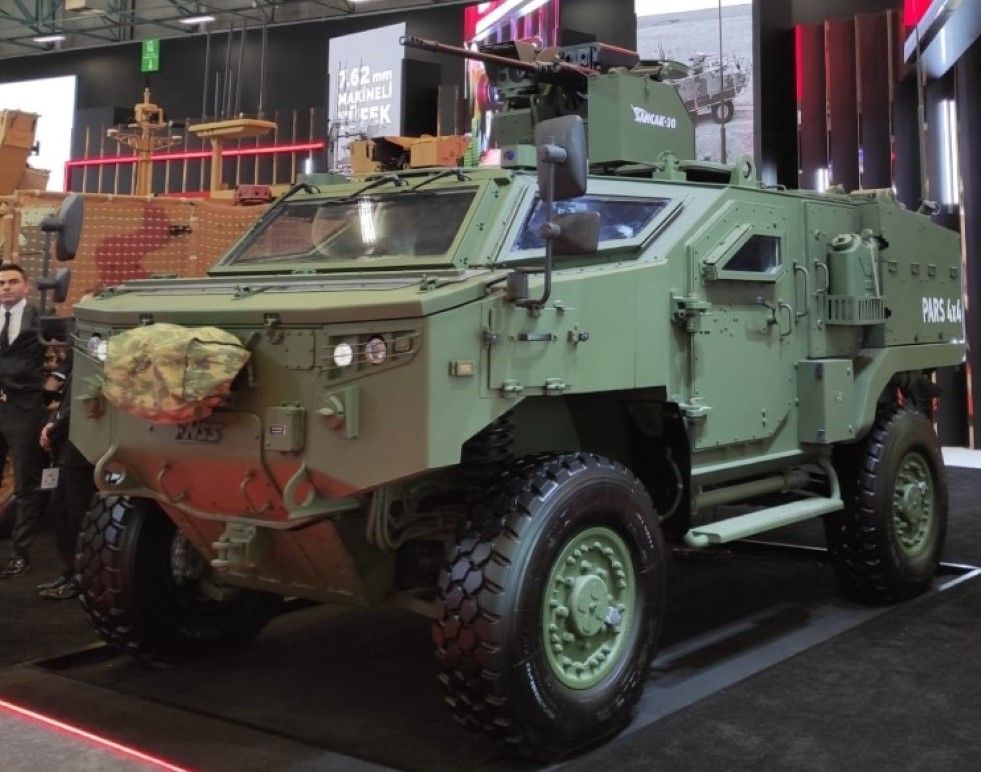
The anti-tank guided missile ammunition racks, which are included in the weapon carrier configuration, are removed from the reconnaissance variant. Removal of magazines; increased the usable internal volume. In this way, rations, life support materials, drinking water, fuel, oil and ammunition required for long-endurance tasks can be stored inside and outside the vehicle. The large interior volume allows the crew to meet all their daily needs behind enemy lines without leaving the vehicle, i.e. without leaving the armour protection. This is, of course, a critical multiplier for a successful mission. The CBRN protection that comes as standard on Pars 4x4s also enables operation in contaminated environments for reconnaissance, surveillance and observation purposes when required.
The vehicle performs its reconnaissance tasks with the electro-optical equipment located in the rear section. Integrating the sensors on the mast enables the fulfilment of the mission by hiding behind the cover when necessary. In addition, high walls or natural landforms are no longer an obstacle up to a certain point. In addition, imaging from much longer distances in open terrain is becoming possible. The advantages mentioned above stand out as a multiplier that reduces risks and probability of detection and thus increases the mission's success. Thanks to its advanced communication equipment, Pars 4x4 can instantly transfer the collected data to the command centre.
The company's preference to adapt the current weapon carrier vehicle for reconnaissance missions provides significant advantages in many respects. The first is, of course, cost. The vehicle that is already in production is, of course, a factor that significantly reduces development, mass production and sustainment expenses. In addition, a platform that has gained experience and is on active duty brings convenience in terms of logistics footprint for military personnel and users in the field. In addition, crew training and orientation times are also shortened.
FNSS, which produces many vehicles for the Turkish Armed Forces, has introduced a cost-effective and sustainable to the market with the adaptation of the Pars 4x4, developed in line with feedback from the field, to reconnaissance missions. The preference, which brings many gains in terms of personnel and logistics, is an issue that breaks the anxieties that the "new" solution will bring in both domestic and foreign markets from the very beginning due to the proven base platform. Inevitably, a system that the user is already actively operating in the field will stand out in a possible procurement process. The fact that many companies focused on reconnaissance vehicles during IDEF'23 indicates that there is at least some activity in the Turkish market. When FNSS's reliable image in the foreign market, which it has consistently maintained for many years, is combined with cost, logistics and sustainability considerations, it would not be inaccurate to assess that the Pars 4x4 has significant export potential.
